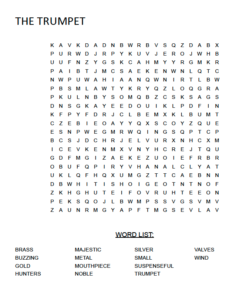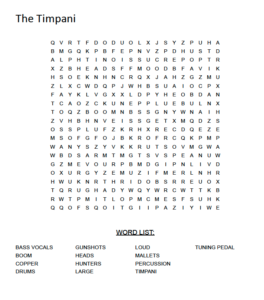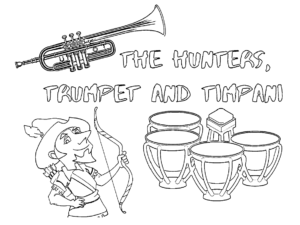>> Back to the main page
“…..Just then, the hunters came out of the woods, following the wolf’s trail and shooting as they went. But Peter, sitting in the tree, said: ‘Don’t shoot! Birdie and I have already caught the wolf. Now help us take him to the zoo.’ And now, imagine the triumphant procession: Peter at the head; after him the hunters leading the wolf; and winding up the procession, grandfather and the cat. Grandfather shook his head discontentedly: ‘Well, and if Peter hadn’t caught the wolf? What then?’ Above them flew Birdie chirping merrily. ‘My, what brave fellows we are, Peter and I! Look what we have caught!’ And if one would listen very carefully, he could hear the duck quacking inside the wolf; because the wolf in his hurry, had swallowed her alive.”
Do a trumpet word search online
Download a trumpet word search
Do a timpani word search online
Download a timpani word search
Download a hunters coloring book page
Trumpet Fun Facts:
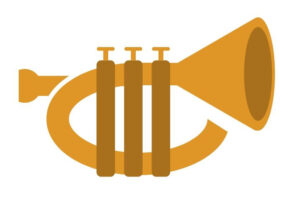
1) The trumpet is the smallest member of the brass family, and is considered the leader of the brass section.
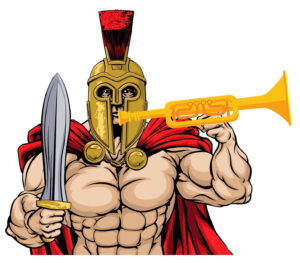
2) Historically, trumpet type instruments have been used as signaling tools in battle or for hunting. You can trace the trumpet’s origins back to 1500 B.C.!
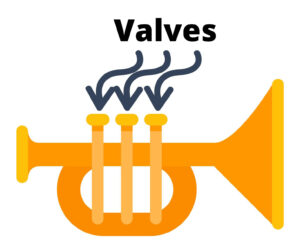
3) Instead of having keys like many of the woodwind instruments, the trumpet uses valves to change the notes on the instrument.
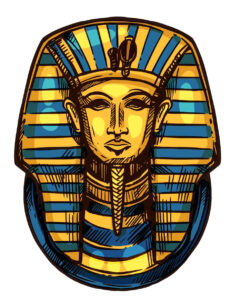
4) Bronze and silver trumpets were discovered in King Tut’s grave in Egypt.
5) If uncoiled, the trumpet would contain over 6 feet of tubing!
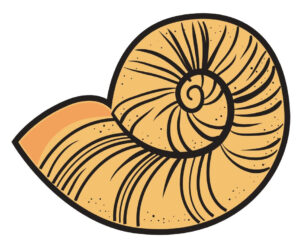
6) Modern trumpets are made from brass, which is a mixture of copper and zinc, but some of the earliest trumpets were made out of materials such as conch shells and wood.
Timpani Fun Facts:
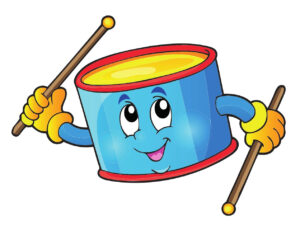
1) The timpani is a member of the percussion family.
2) The musician who plays timpani is a called a timpanist, and they are the largest drums in the percussion section. You will see that the timpanist uses 4 (and sometimes 5) large timpani drums.
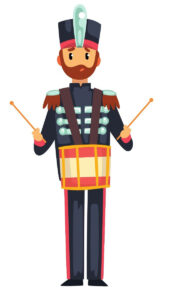
3) Another name for the timpani is the “kettledrums” and have a history of being used as military drums.

4) Timpani are struck on their heads with a pair of drumsticks called mallets. Different sets of mallets can range in different sizes and thickness, to allow the timpanist to add variety to their sound and volume.

5) Timpani are usually made of copper, which is more resistant to temperature changes, allowing for amore consistent sound.
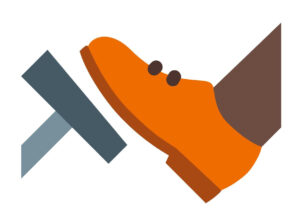
6) The timpani can change pitches, just like the woodwind and brass instruments, but using the tuning pedals underneath the drums with their feet.






